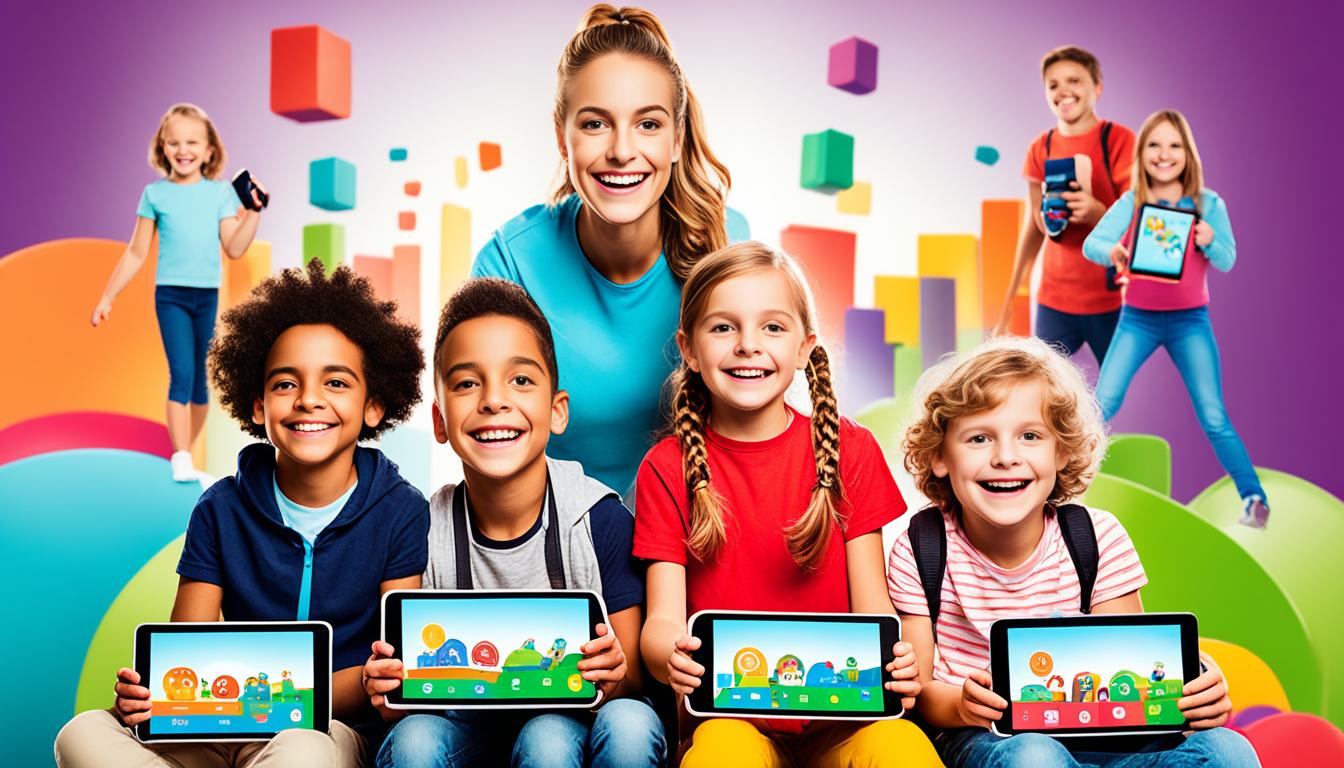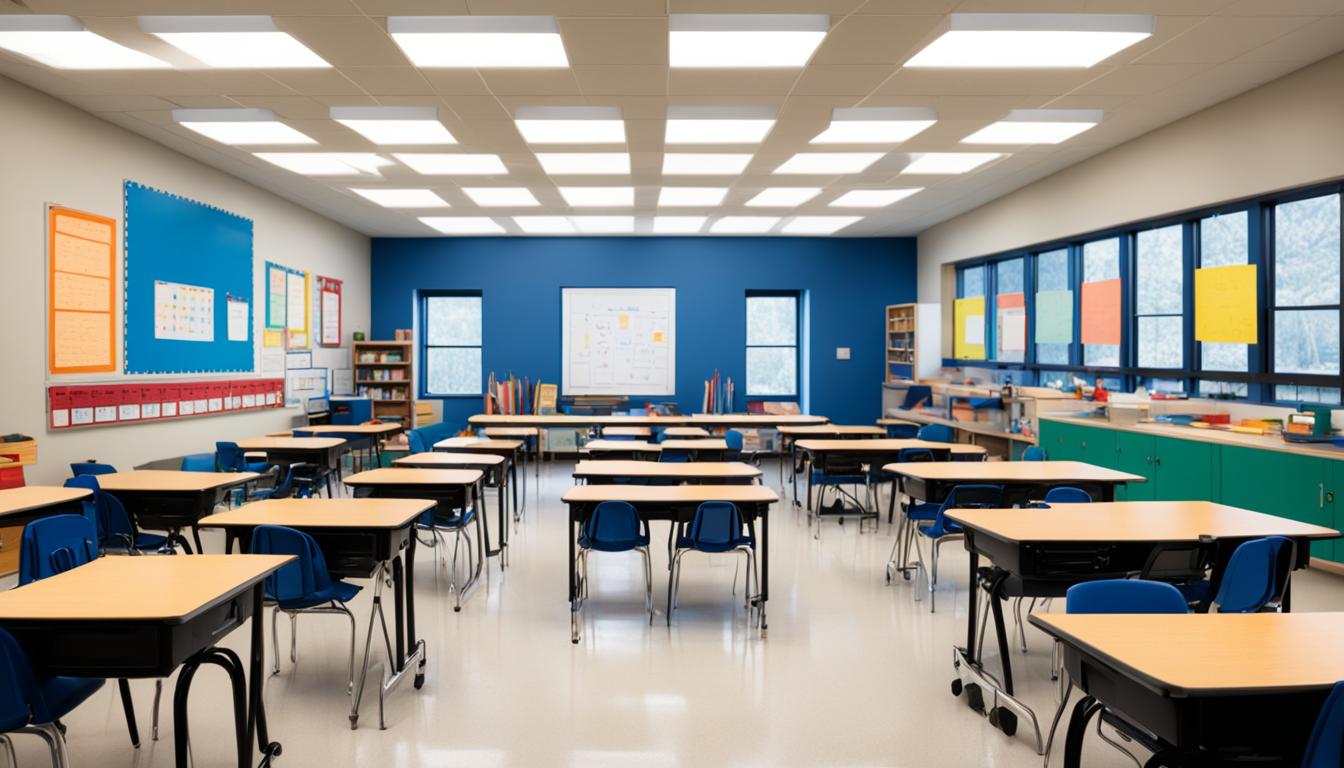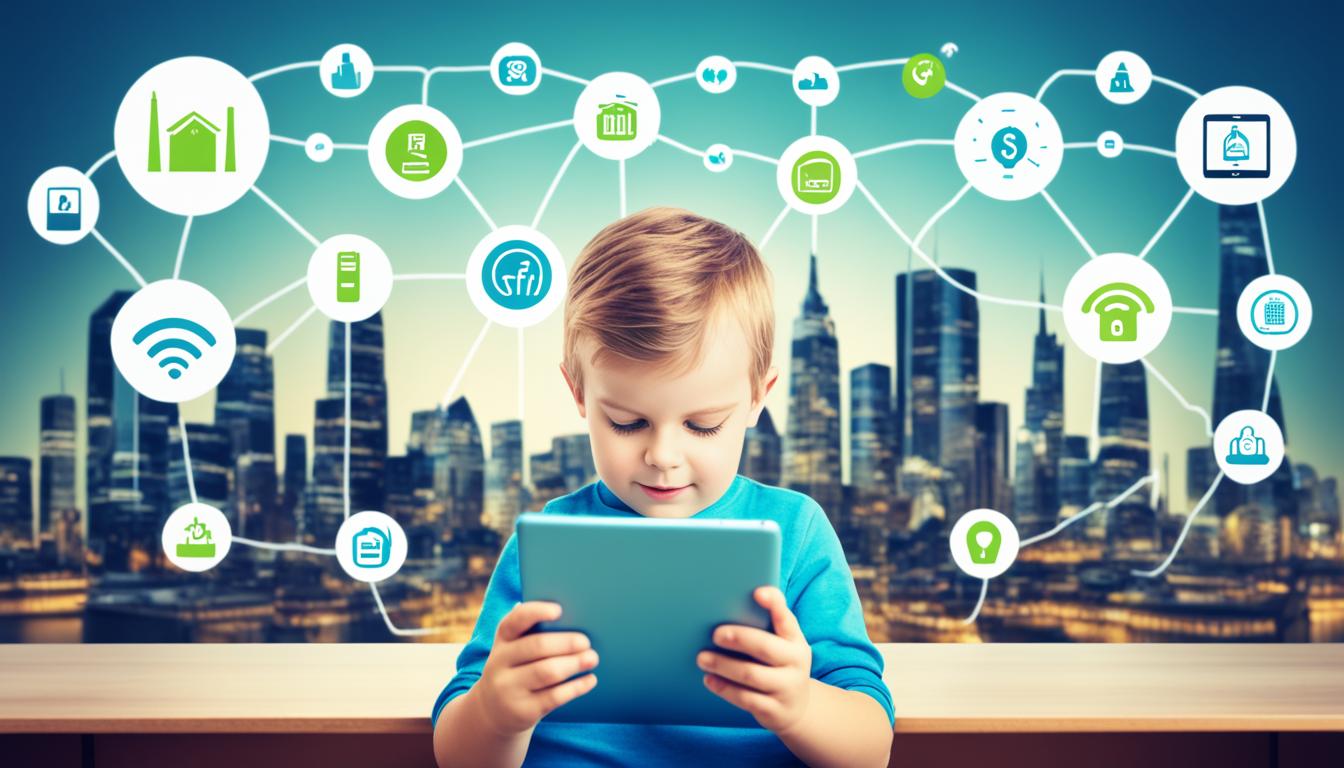Disclosure: This Post Contains Affiliate Links; We earn a commission on purchases.
Technology plays a significant role in our daily lives, including the lives of children. As parents and educators, it is crucial to choose age-appropriate technology devices that provide a safe and educational experience for kids. By selecting the right devices, we can enhance their learning journey and prepare them for the digital world.
Key Takeaways:
- Technology should be tailored to the developmental needs of children.
- Safety and privacy controls are crucial when choosing technology for kids.
- Devices should enhance fine motor skills, cognitive abilities, and social-emotional skills.
- Consider partnering with vendors who understand the unique needs of childcare settings.
- Balance technology usage with other important aspects of childhood, such as creative play and social interactions.
Considerations for Age-Appropriate Technology in Preschool Classrooms
When it comes to incorporating technology into preschool classrooms, there are several important considerations to keep in mind. It is crucial to ensure that the technology is age-appropriate and meets the developmental needs of the children. By selecting the right tech gadgets for kids, educators can create an engaging and educational environment for young learners.
The chosen technology should enhance various developmental domains, including fine motor skills, cognitive/problem-solving skills, and social-emotional skills. By providing interactive learning experiences, digital devices for children can support their growth and prepare them for future educational challenges.
Safety is another crucial aspect to consider. The technology should be safe and free from harmful content. Educators must prioritize security and privacy by selecting devices that have appropriate content filtering and privacy controls.
Partnering with vendors who understand the unique needs of preschool classrooms can be beneficial. These vendors can provide safe tech gadgets for kids that align with the educational goals of the childcare setting. By working closely with trusted partners, teachers can ensure that technology enhances the learning experience and supports the overall curriculum.
Technology has the potential to strengthen adult-child relationships as well. By incorporating video calls with guest speakers, educators can expose children to diverse experiences and perspectives. This interactive approach not only enhances learning but also fosters a sense of connection and engagement.
“When technology is used appropriately and intentionally, it can be a powerful tool for early childhood education.”
By considering these factors, preschool educators can effectively integrate educational technology for kids into their classrooms. With the right devices and thoughtful implementation, technology can become a valuable ally in creating a stimulating and enriching learning environment.
Age-Appropriate Technology Considerations
| Consideration | Description |
|---|---|
| Age Appropriateness | Technology devices should be suitable for the age and developmental stage of the children. |
| Developmental Domains | The chosen technology should enhance fine motor skills, cognitive/problem-solving skills, and social-emotional skills. |
| Safety | The technology should be free from harmful content and have appropriate privacy controls. |
| Vendor Partnership | Working with vendors who understand the unique needs of preschool classrooms can provide tailored solutions. |
| Adult-Child Relationships | Technology can be used to strengthen relationships through video calls with guest speakers. |
Ensuring Safety in Technology for the Classroom
Child safety is of utmost importance in any childcare center, especially when it comes to incorporating technology into the classroom. It is crucial to choose child-friendly tech products that prioritize safety and well-being. When selecting the best tech products for kids, consider devices that are free from harmful content, have robust privacy controls, and provide appropriate filtering to block inappropriate sites or images. Ensuring a safe technological environment for young children is essential in their learning journey.
Technology should never be emotionally damaging, physically harmful, disrespectful, degrading, dangerous, exploitative, or intimidating to children. It should be a tool that supports their growth and development in a safe and secure manner. Little Learners tablets with Samsung technology are an excellent example of child-friendly tech gear that prioritizes safety. These tablets offer a special kid’s mode that blocks web browsing and restricts access to inappropriate content, providing parents and educators with peace of mind.
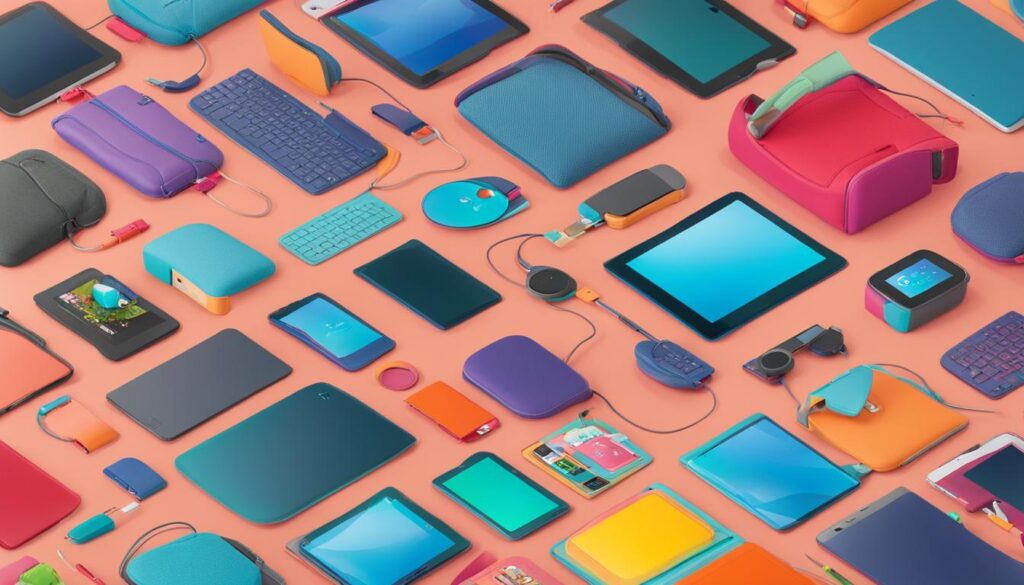
By choosing child-friendly tech products, educators can create a secure and nurturing technological environment that complements their teaching efforts. With the right devices in place, children can explore, learn, and engage with technology in a safe and age-appropriate manner.
Incorporating Educational Merit in Technology for Classrooms
When it comes to using technology in educational settings, it’s essential to prioritize educational merit and choose activities that align with developmental needs. Simply incorporating technology for the sake of it may not yield the desired educational outcomes. Instead, educators should focus on integrating technology with activities that are both educationally sound and developmentally appropriate.
One way to enhance learning through technology is by combining sensory products with software technology. This approach can promote various skills such as literacy, math, coding, and social-emotional learning. By engaging multiple senses, children can have a more immersive and interactive educational experience.
Introducing Augmented Reality Technology
Augmented reality (AR) technology offers exciting opportunities for educational engagement. Products like the Illumination Station and Obie floor projector provide multi-sensory experiences that captivate young learners. With AR, children can collaborate in interactive learning environments, fostering critical thinking and teamwork skills.
Furthermore, AR technology with 3D features can serve as a supplemental curriculum, increasing student engagement and overall academic performance. By harnessing the engaging power of AR, educators can create immersive learning experiences that resonate with children.
It’s important to note that technology should not be limited to the confines of the classroom. It can extend to other domains of a child’s life, supporting creative play, exploration, physical activity, outdoor experiences, conversation, and social interactions.
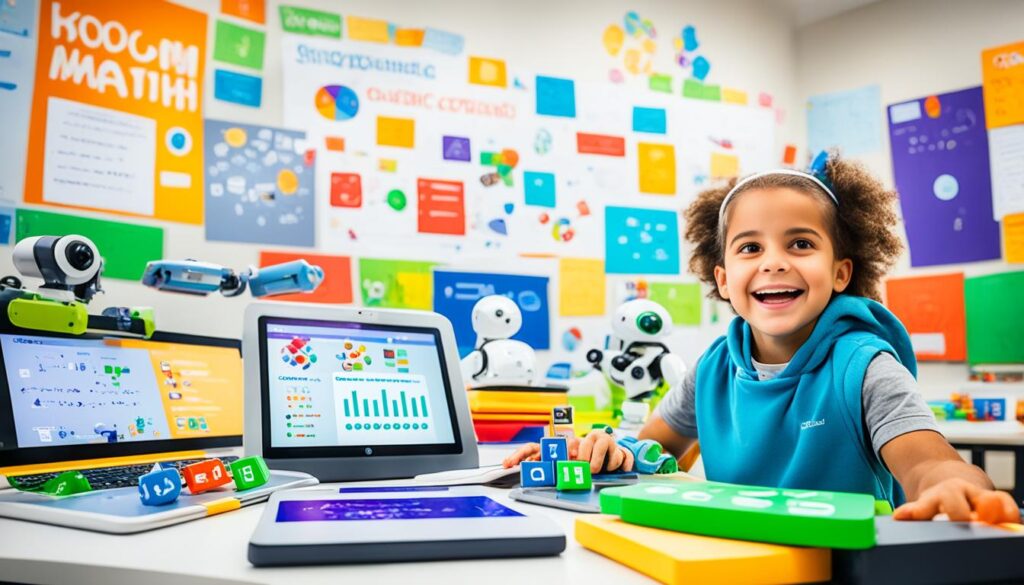
Examples of Educational Merit in Technological Toys
| Technology Toy | Educational Merit |
|---|---|
| Robotics kits | Enhances problem-solving and critical thinking skills |
| Coding games | Develops coding literacy and logical reasoning abilities |
| Science exploration kits | Encourages hands-on learning and scientific inquiry |
| Interactive maps and globes | Improves spatial awareness and geographical knowledge |
| Art and music creation tools | Fosters creativity and expression |
By choosing technology toys that offer educational merit, children can have fun while developing important skills and knowledge. These toys go beyond mere entertainment, providing children with meaningful learning experiences. Incorporating educational technology in classrooms and beyond can open up new possibilities for engagement and growth.
Conclusion
Age-appropriate technology devices for kids, such as tablets, laptops, and educational toys, can play a vital role in enhancing their learning experience. It is crucial for parents and educators to carefully select technology that meets the developmental needs of children and prioritizes their safety.
When choosing kids electronic devices, it is important to consider factors such as age appropriateness, safety features, durability, and educational merit. By incorporating child-friendly tech products into educational lessons, children can gain access to a wide range of content and develop essential skills for the future.
However, it is essential to strike a balance and not let technology replace other important aspects of childhood. Creative play, physical activity, and social interactions are equally important for a child’s holistic development. By using technology intentionally and alongside other activities, children can benefit from the advantages of educational technology for kids without compromising their overall well-being.
In conclusion, age-appropriate technology devices can facilitate learning, foster creativity, and promote independence in children. By making informed choices and embracing child-friendly tech products, parents and educators can ensure that technology becomes a valuable tool in a child’s educational journey.
Source Links
- https://blog.kaplanco.com/4-considerations-for-choosing-the-right-technology-for-your-classroom
- https://tech.ed.gov/earlylearning/principles/
- https://parenting.firstcry.com/articles/age-appropriate-technologies-for-kids-digital-milestones-to-aim-for/

Subscribe to Our Newsletter

